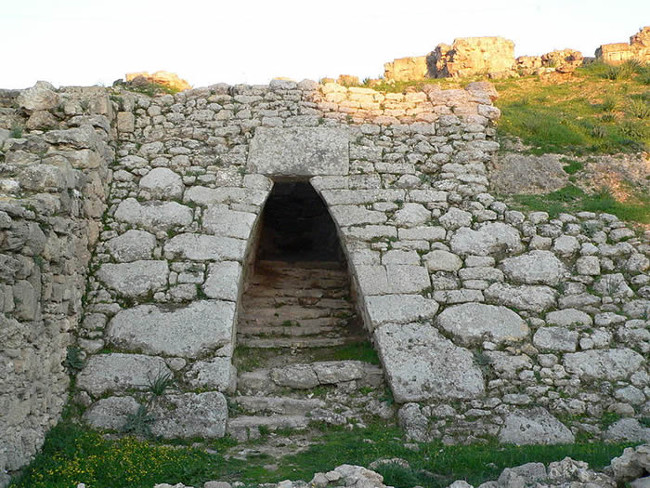The mesmerizing melody comes from the 3,500-year-old ancient music
In the early 1950s, archaeologists found burning clay tablets at the Royal Palace in Ugarit (today Ras Shamra, Syria). On terracotta boards carved with cuneiform symbols are thought to guide music in the language of the ancient Hurrian people .
A total of 29 terracotta boards were found during the archaeological process, but only one board was intact, enough for researchers to " translate " again.

Ancient musical characters are engraved on a block of clay to retain the melody.
This song was named " Hurrian hymn to Nikkal " by researchers, which means " Hurrian hymns offered to the goddess Nikkal ", which were used in religious ceremonies. In the ancient culture of people living in the Middle East, Nikkal is a goddess of protection for their orchards.
With musical symbols in this hymn, there are many experimental ways in modern music. In 1972, Professor Anne Draffkorn Kilmer, who specializes in Middle Eastern culture, at the University of California (USA), began to translate wedge-shaped characters on intact terracotta boards into phonetic languages. modern music. From this "translation" version, there were many melodies that were born.

Entrance to the Royal Palace in the ancient city of Ugarit, where terracotta boards are found.
Later, Professor Richard Dumbrill, an expert in archeology - studying Middle Eastern culture, teaching at the University of London, also tried to translate the terracotta board.
The video below is an experiment Michael Levy, an English musician specializing in research and performance with ancient instruments, melodies, and techniques. For him the "bringing the beautiful lyre of ancient times into the world of bland and lifeless modern music " is his mission.
Until now, no one has been able to know for sure the melody was recorded on these ancient terracotta boards. We can only guess based on the signs and imagination of the "translator".
The tunes engraved on terracotta boards in Ugarit are considered the oldest , oldest known music in human civilization, dating back to about 1400 BC.
You should read it
- 11 mysterious ancient buildings in the world that challenge the scientific world
- Ancient ancient embankment found in Aswan, Egypt
- The 'eccentricities' are only found in ancient Egypt
- Back in the past to find out how the ancient Romans went to the toilet
- 18 photos show that the technique of the ancients surpassed us
- The ancient sarcophagus was discovered during road construction in Tuzla, Istanbul
- Strange similarities of ancient works
- Discover the mysterious mummification process of the ancient Egyptians
- Rodents like hamsters ... can be the main dish of ancient Scotland
- The ancient 3,300-year-old tunnel was discovered in Turkey
- The rare ancient Roman mosaic of the 4th century was discovered in England
- The groundbreaking archaeological findings about ancient Egypt
May be interested

The groundbreaking archaeological findings about ancient Egypt

Discovered the 2800-year-old ancient seed found in Turkey

The discovery of an ancient Persian stele carved from King Darius I in Russia

Rescue workers picked up 900-year-old oil lamps at sea

The second time the ancient fossil '3 in 1' was discovered





 The 9,000-year-old ax sheds light on the ancient burial custom
The 9,000-year-old ax sheds light on the ancient burial custom Unexpected code decoding on New Year's Day
Unexpected code decoding on New Year's Day The ancient 3,300-year-old tunnel was discovered in Turkey
The ancient 3,300-year-old tunnel was discovered in Turkey Instructions on how to search for songs, find music through fast and standard melody
Instructions on how to search for songs, find music through fast and standard melody Found the 2,800 year old Urartian wastewater treatment system at Van
Found the 2,800 year old Urartian wastewater treatment system at Van Admire the 10 thousand-year-old architectural masterpieces of ancient Egypt
Admire the 10 thousand-year-old architectural masterpieces of ancient Egypt